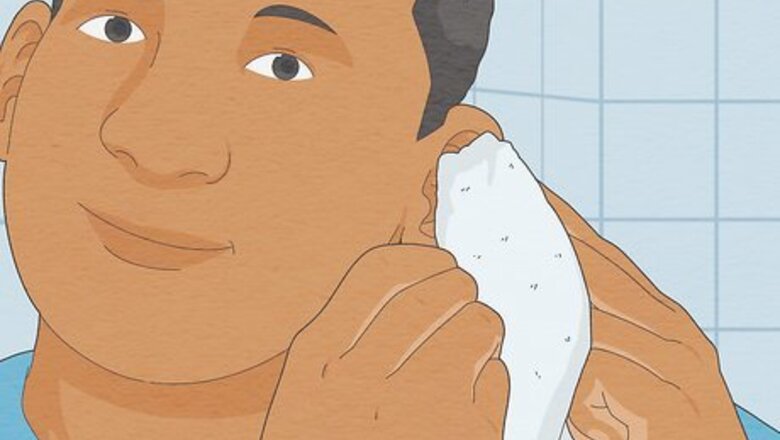
views
- Try to drain the water naturally first. Tilt your head, lie down, chew gum, yawn, or use the Valsalva maneuver to dislodge stuck water from your ear.
- Try over-the-counter ear drying drops or a mixture of equal parts rubbing alcohol and distilled, white vinegar to dry out water and prevent infection.
- See a doctor if the stuck water causes pain, redness, fever, or drainage from your ear.
Wipe your ear dry.
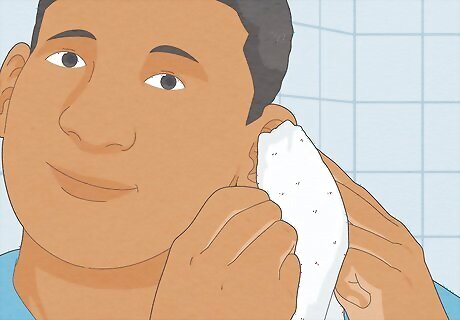
Rub your outer ear with a cloth to soak up excess water. After swimming or bathing, tilt your waterlogged ear to the side and wipe your outer ear slowly and gently. Stick to the outer ear only—inserting the cloth deeper into the ear canal can push some water further in. Do this soon after you’re exposed to water to keep it from migrating further into your middle or inner ear.
Tilt your head and tug your earlobe.

Pull on your earlobe to widen the ear canal to help water escape. Lower your ear and move your earlobe in all different directions. Try pulling the top of the ear to the side of your head, too—any motion will help! If the water’s extra stubborn, try bouncing or hopping lightly to shake it out.
Lie down on your side.
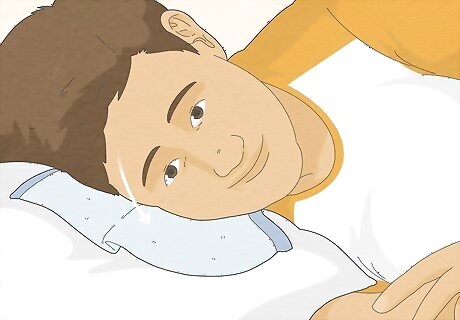
Let gravity do the work of clearing your ear while you take a load off. Place a towel or cloth over your pillow to absorb any water that comes out. Watch a show, listen to music, or ponder the universe for a few minutes while the water works its way out. If the water’s still there at bedtime, try sleeping on your side that night so the liquid can naturally work its way out by the morning.
Move your jaw.
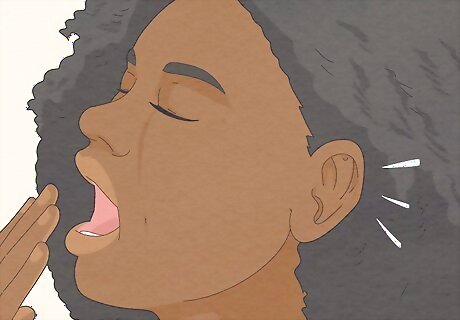
Chew gum or make yourself yawn to move water from your inner ear. Tilt your head to the side and move your jaw any which way—try fake chewing, swiveling it side to side, or just talking with an exaggerated open mouth. The motion will ease tension in your Eustachian tube and help the water flow out. After you hear the “pop” of the water clearing, shake your head a little bit to encourage the water to move through your ear canal.
Make a vacuum in your ear with your palm.
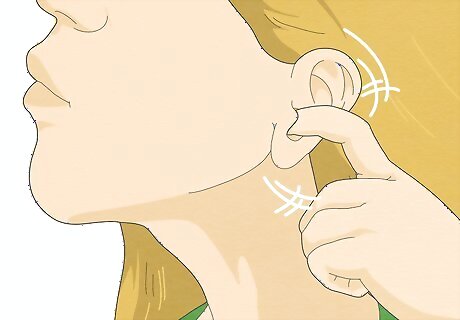
Creating a temporary vacuum will pull water out from your inner ear. Tilt your ear down and cup your palm against it for a few seconds. Press hard to get a good seal that will remove any fluids from your ear. Remove your hand while your head is still tilted to let the water drain out. Make extra sure to tilt your ear down. If it’s facing up, you’ll wind up pushing the water deeper into your ear canal. Try rubbing your hand in a circular motion while you’re holding the vacuum to massage the liquid out (especially if you’re hearing is muffled by the water). Alternatively, move your finger in and out of your ear rapidly for a few seconds. Just be careful not to scratch your ear canal, since this could cause an infection.
Do the Valsalva maneuver.
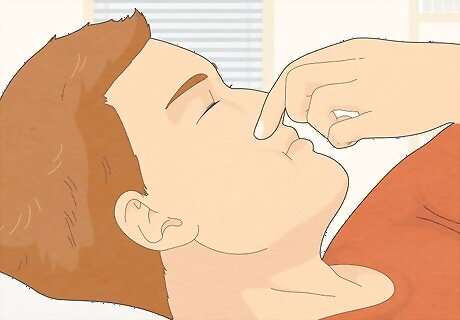
Try to exhale through your closed mouth and nose to create pressure. Sit down or lie on your back and gently pinch your nose closed. Take a deep breath and close your mouth, then try to breathe out against your mouth and nose. Hold the position for 15-20 seconds. Tilt your head to the side if the maneuver doesn’t work upright. The light pressure will force liquid out through your middle ear. Try blowing your nose for a similar effect. The Valsalva maneuver helps remove liquid or small objects from your middle ear that shouldn’t be there (and can slow your heart rate, too).
Evaporate the water with a hair dryer.

Blow dry your ear to dry up lingering moisture with air power. Hold the dryer about 1 ft (30 cm) away from your ear and blow into or across the opening on the lowest heat setting. As the warm air passes through, it will carry away or evaporate any water it blows over. Use low heat and keep a steady distance from your ear to avoid burning yourself. If the warm air is too hot, use cool air instead. Any focused “breeze” will help dry out your inner ear.
Repel the water with warm olive oil.
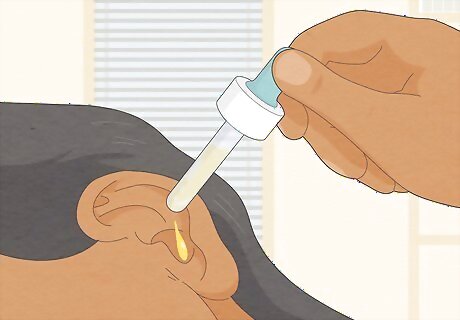
Take advantage of the fact that oil and water don’t mix to push water out. Microwave a small bowl of olive oil for a few seconds (make sure it’s just warm, not hot). Aspirate the oil into an ear dropper and put a few drops in the watery ear. Let it sit for a few minutes, then tilt your ear down to let the water and oil drain. Since water and oil don’t mix, the oil will help drive the water away and out of your ear. Olive oil can also be used to clean your ear of earwax.
Make ear drops with rubbing alcohol and vinegar.

Use alcohol to evaporate the water and vinegar to kill bacteria. Make a 1:1 mix of rubbing alcohol and distilled, white vinegar in a small bowl, then aspirate the mixture into an eye or ear dropper. Tilt your head and put a few drops in the waterlogged ear, then let it sit for 3-5 minutes before draining it out. Use this method to treat frequent swimmer’s ear (an infection in the outer ear canal from water sitting in your ear). The rubbing alcohol mixes with the water and evaporates it quickly. The vinegar breaks down earwax and kills bacteria to prevent an infection. Don’t use this method if you’ve got a punctured eardrum or ear tubes. Rubbing alcohol is meant for external use only.
Flush your ear with hydrogen peroxide.
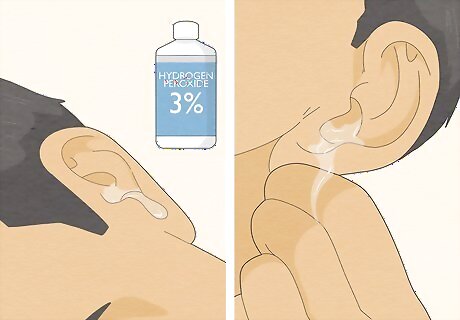
Use 3% hydrogen peroxide to dissolve earwax that’s trapping water. Put half of an ear dropper’s worth of peroxide into your ear and let it sit for a moment while it bubbles and fizzes. Then, tilt your head and tug on your earlobe or upper ear to drain the liquid out. Use drying drops or a hair dryer afterward to make sure there’s no liquid left in your ear. Do not use hydrogen peroxide in your ears if you have an ear infection, ear tubes, or a punctured eardrum.
Try over-the-counter ear drops.

Apply OTC ear drops with acetic acid or alcohol to dry up water. Look for products like Auro-Dri or Swim-Ear that contain 95% isopropyl alcohol that are meant for drying, or diluted acetic acid solutions like BigWave Drops that dry and prevent infections. Apply the drops according to the instructions on the packaging. Don’t use these drops if you have ear tubes or a ruptured eardrum. These drops are generally safe for adults and children.
Check with a doctor if you notice infection symptoms.
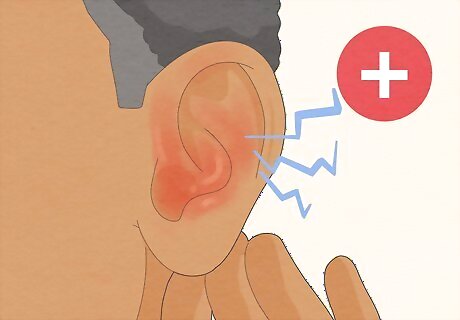
Look out for pain, redness, fever, or ear drainage in addition to water. Your doctor will determine if the water has caused an infection that needs medical treatment, like Swimmer’s Ear. Your doctor will probably prescribe antibiotic or acetic acid ear drops for 10-14 days, oral antibiotics, anti-inflammatories, or pain medication to treat the infection. Water-caused infections are completely treatable. The infection will probably begin to pass after a few days and be mostly cleared up after about a week.













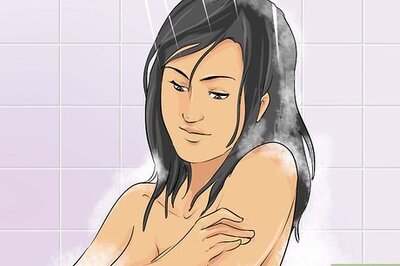





Comments
0 comment